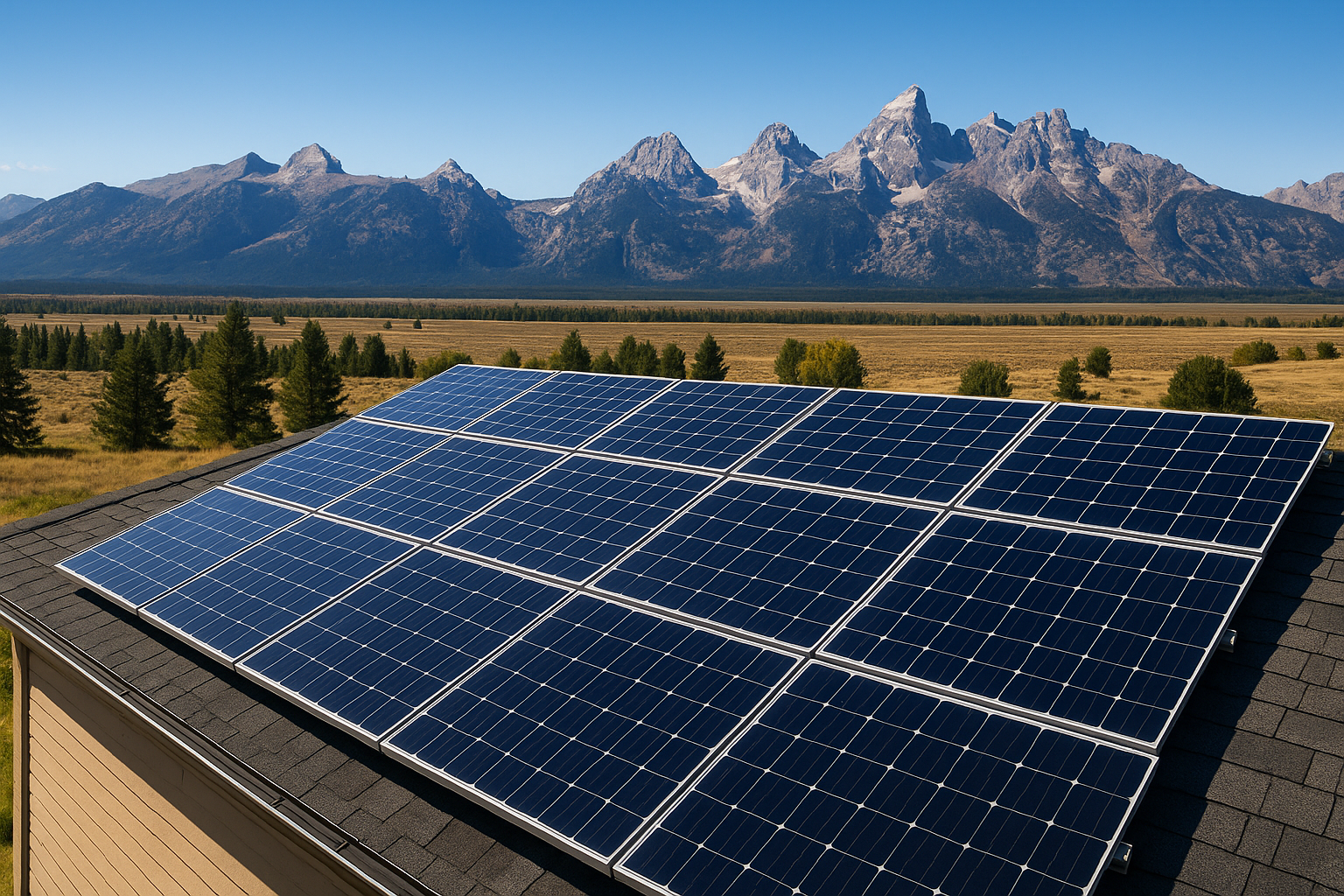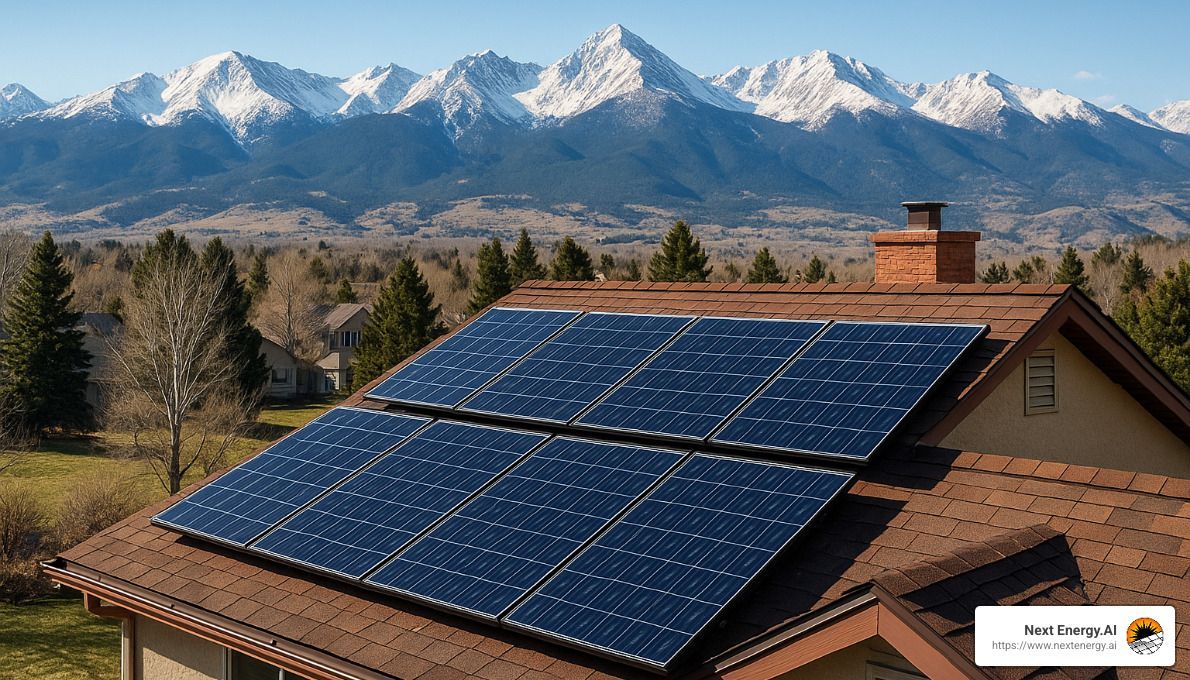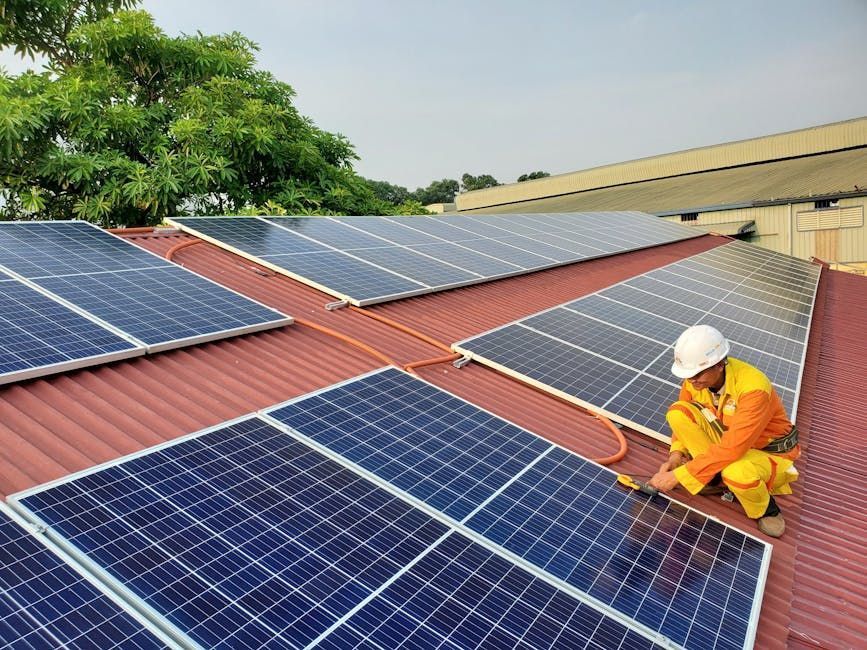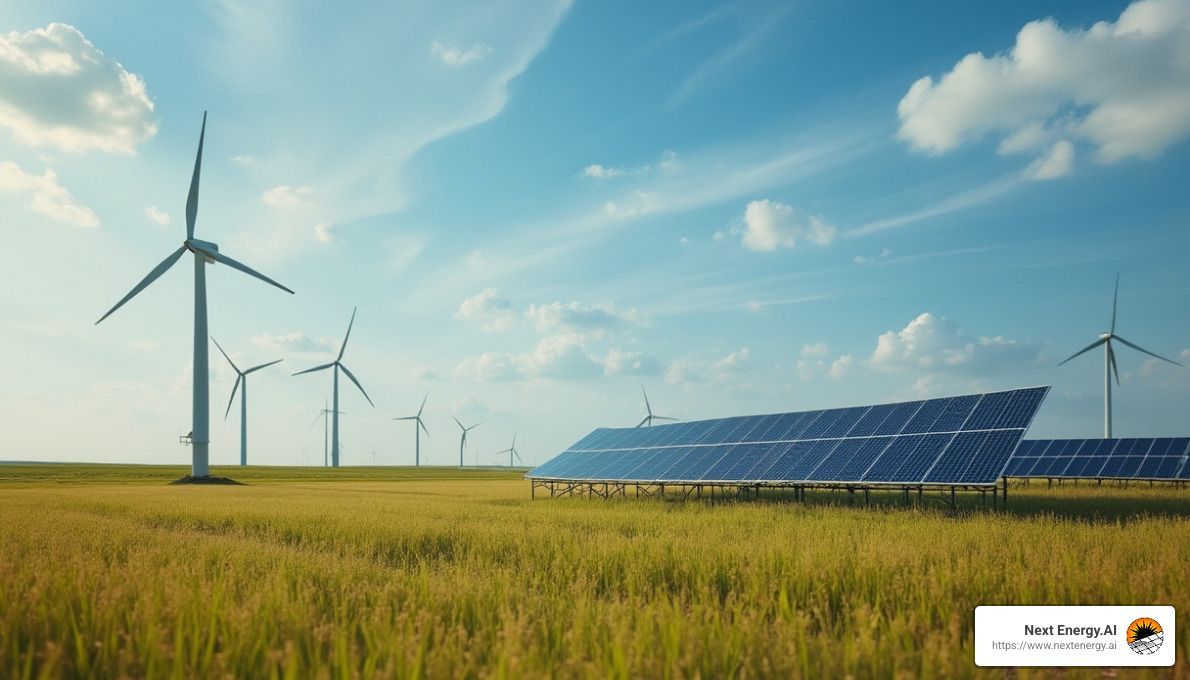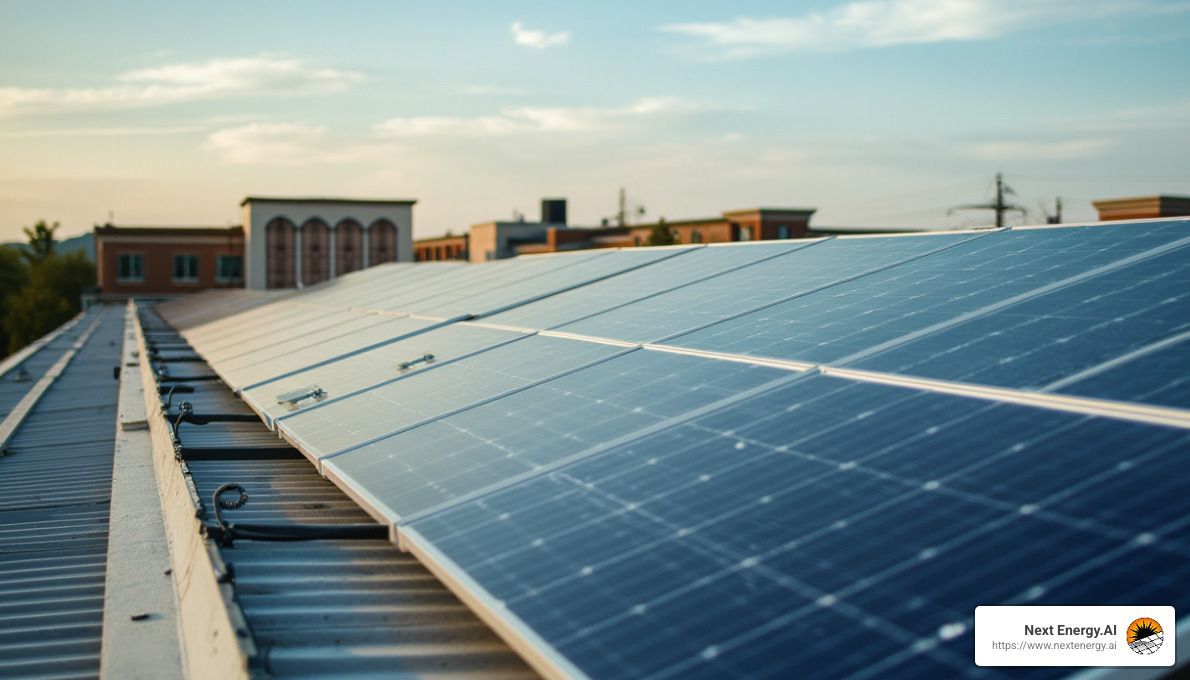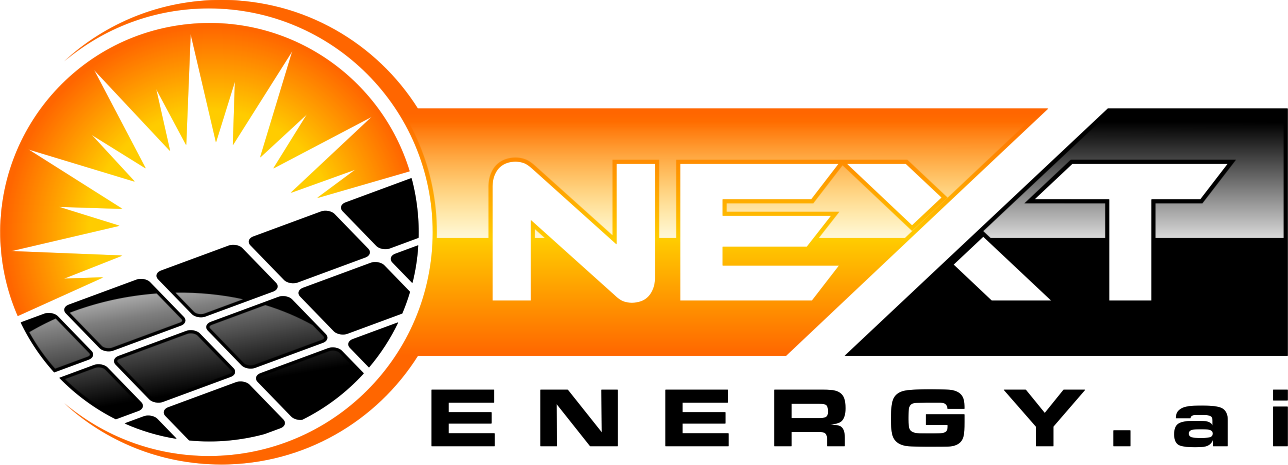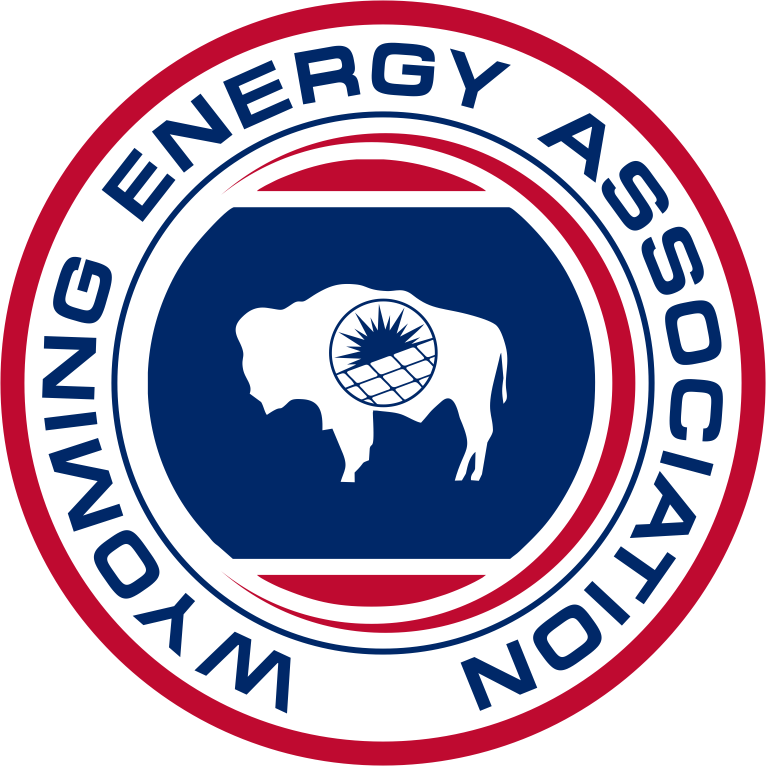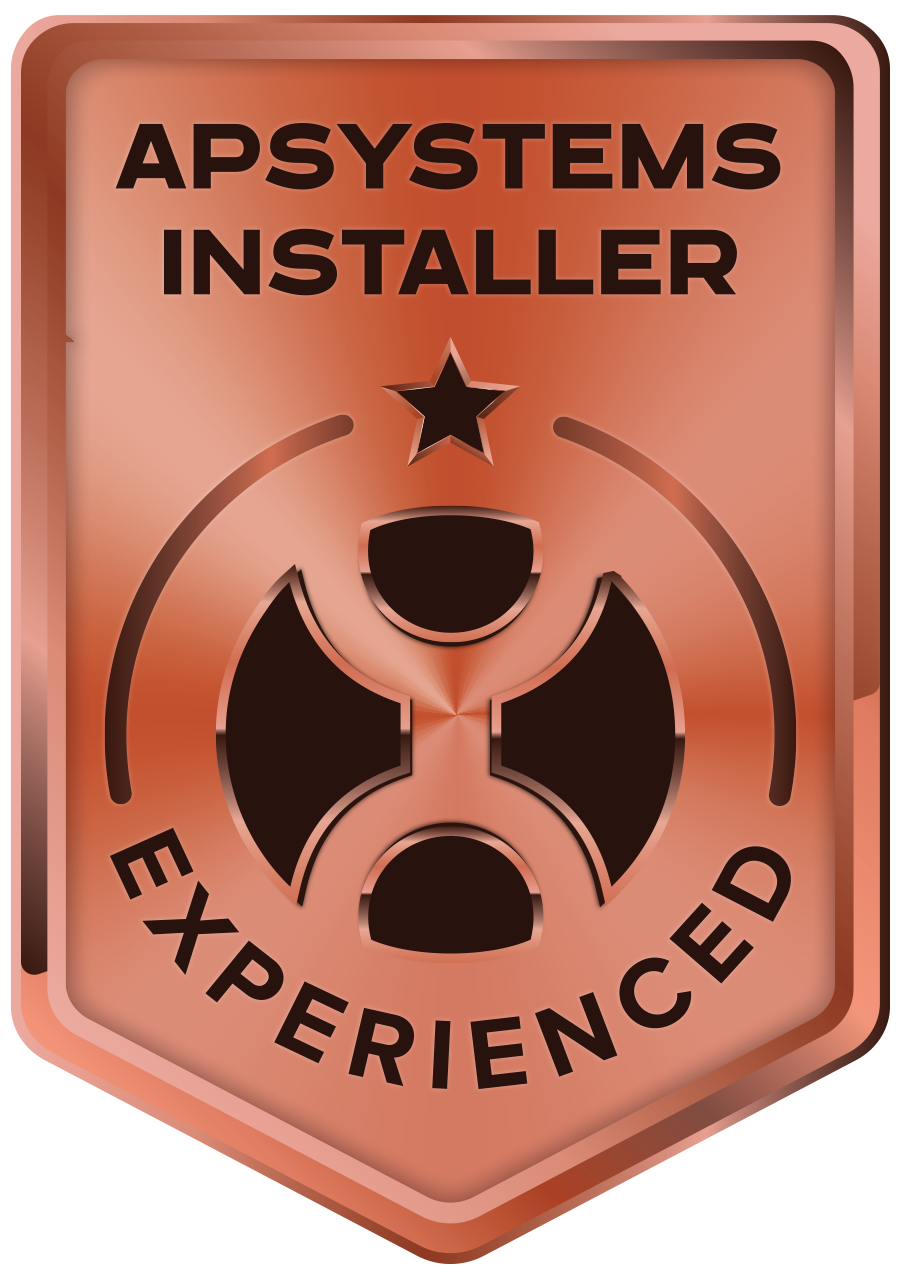Solar Storage Showdown: Which Option is Right for You?
Solar power storage options are key for anyone interested in pursuing energy independence and reliable power during grid outages. Choosing the right solar power storage option can ensure you have energy when you need it most. Here's a quick overview of the most popular choices:
- Lithium Iron Phosphate (LiFePO4) Batteries: Known for their long cycle life and safety.
- Lithium Nickel Manganese Cobalt Oxide (NMC) Batteries: Offers high energy capacity and compact size.
- Lead-Acid Batteries: Economical but with shorter lifespan and lower energy density.
Solar energy storage allows homeowners to keep lights on and appliances running even when utility power fails. It’s more than just backup power; it’s a step towards a cleaner, more sustainable future that reduces reliance on fossil fuels.
My name is Spencer Gordon, and as the CEO of NextEnergy.ai, I've helped countless customers steer solar power storage options to find solutions custom to their needs. With a background in renewable energy and a commitment to sustainability, I bring expertise and a local touch to energy storage solutions.
Understanding Solar Power Storage Options
When it comes to storing solar energy, you have several solar power storage options. Each has its own benefits and suits different needs. Let's break down the three main types: battery storage, thermal storage, and mechanical storage.
Battery Storage
Batteries are the most common way to store solar energy, especially in homes. They work by storing electricity through a chemical reaction. The most popular choice here is the lithium-ion battery. It’s known for its high energy density and long lifespan.
- Pros: Efficient, scalable, and rapidly improving. Lithium-ion technology is advancing, making batteries cheaper and more accessible.
- Cons: Initial cost can be high, though prices are dropping.
A promising statistic: The U.S. energy storage market is expected to grow sixfold by 2025, reaching 7.5 GW annually.
Thermal Storage
Thermal storage captures solar energy as heat. This method uses mediums like water or molten salt to store heat in insulated tanks. The energy is released to produce electricity when needed.
- Pros: Ideal for large-scale applications and can efficiently store energy for long periods.
- Cons: High upfront costs and more suitable for commercial use than residential.
Mechanical Storage
Mechanical storage uses potential energy to store and release electricity. There are three main types:
- Pumped Hydro: Uses excess solar energy to pump water uphill. Later, the water flows down to generate electricity.
- Pros: Cost-effective for large-scale use.
- Cons: Requires specific geographical conditions.
- Flywheel: Stores energy by spinning a rotor. It’s great for short-term storage.
- Pros: Quick energy release and long lifespan.
- Cons: Limited storage capacity.
- Compressed Air: Stores energy by compressing air in large tanks. Released air generates electricity.
- Pros: Relatively low cost.
- Cons: Efficiency can vary.
Mechanical storage is generally more suited for utility companies with bigger budgets. It helps them manage peak energy demand effectively.
In summary, your choice among these solar power storage options will depend on your specific needs, budget, and space. Whether you're looking for a home solution or a commercial setup, understanding these options is the first step towards sustainable energy independence.
Next, we'll dive into Exploring Innovative Solar Energy Storage Solutions, including AI-improved systems and smart grid integration.
Exploring Innovative Solar Energy Storage Solutions
As solar technology evolves, innovative solutions are redefining how we store and manage solar energy. Let's explore some of the cutting-edge advancements in solar energy storage.
AI-Improved Storage Systems
Artificial Intelligence (AI) is changing solar energy storage by optimizing how systems operate. AI algorithms analyze energy consumption patterns and weather forecasts to manage battery charging and discharging. This smart approach ensures maximum efficiency and reliability.
- Example: Companies like Next Energy.AI use AI to adapt to your energy needs, optimizing solar energy use even during cloudy days or peak demand periods.
Smart Grid Integration
Smart grid technology allows solar storage systems to communicate with the power grid. This integration helps balance supply and demand, reducing the strain on the grid and enhancing energy reliability.
- Fact: Smart grids can significantly reduce energy losses and improve grid stability. By 2025, many U.S. states aim to have smart grid systems fully operational, enhancing energy management.
Advanced Energy Management
Advanced energy management systems offer homeowners and businesses greater control over their energy use. These systems integrate with home automation technologies, allowing users to monitor and adjust their energy consumption in real-time.
- Statistic: According to recent studies, homes with advanced energy management systems can reduce energy costs by up to 30%.
These innovations not only make solar power more efficient but also more accessible. By leveraging AI and smart grid technology, solar storage systems are becoming smarter and more adaptable, paving the way for a sustainable energy future.
Next, we'll compare different battery technologies to help you choose the best option for your solar storage needs.
Comparing Battery Technologies
When it comes to solar power storage options, choosing the right battery technology can significantly impact your energy system's performance and cost. Let's explore some of the most common battery types: lithium-ion, lead-acid, nickel-cadmium, and flow batteries.
Lithium-Ion Batteries
Lithium-ion batteries are the frontrunners in solar energy storage. Known for their high efficiency and long lifespan, they are the go-to choice for many homeowners. These batteries can last between 10 to 15 years and handle numerous charge-discharge cycles without significant performance loss.
- Fact: Lithium-ion batteries can last up to 15 years, making them a long-term investment for solar storage.
They also have a high depth of discharge (DoD), meaning you can use most of the stored energy without reducing the battery's lifespan. However, they tend to be more expensive than other options, though prices are steadily decreasing.
Lead-Acid Batteries
Lead-acid batteries are the traditional choice and are often more affordable. They come in two main types: flooded and sealed (AGM). While they are budget-friendly, they have a shorter lifespan, typically lasting 5 to 7 years.
- Statistic: Lead-acid batteries are generally 50% cheaper than lithium-ion but need replacement more frequently.
Their lower depth of discharge means they aren't as efficient as lithium-ion batteries, but they remain a viable option for those looking for a cost-effective solution.
Nickel-Cadmium Batteries
Nickel-cadmium batteries have been around for a long time and are known for their durability and ability to perform well in extreme temperatures. However, they are less common in solar applications due to their lower energy density and environmental concerns related to cadmium.
- Note: Nickel-cadmium batteries are durable but less efficient and environmentally friendly compared to other options.
Flow Batteries
Flow batteries are gaining attention for their scalability and long cycle life. They store energy in liquid electrolytes contained in external tanks, making it easy to adjust capacity by simply adding more electrolyte.
- Example: Flow batteries are ideal for large-scale solar projects due to their ability to scale up easily.
While still in the early stages of residential use, flow batteries offer promise for future solar storage solutions with their potential for long-duration energy storage.
Each battery technology comes with its pros and cons. Lithium-ion batteries are well-suited for those seeking efficiency and longevity despite the higher cost. Lead-acid batteries are great for budget-conscious users who don't mind replacing them more often. Nickel-cadmium and flow batteries offer unique benefits that may suit specific needs, such as extreme conditions or scalability.
Next, we'll explore thermal and mechanical storage solutions to expand your solar storage possibilities.
Thermal and Mechanical Storage Solutions
When considering solar power storage options, explore thermal and mechanical solutions. These methods are particularly useful for large-scale applications and can complement battery storage systems.
Pumped Hydropower
Pumped hydropower is a well-established storage technology that uses water to store energy. During low energy demand periods, electricity pumps water uphill into a reservoir. When energy demand peaks, the water flows back downhill, turning turbines to generate electricity. This method is efficient but requires specific landscapes with suitable reservoirs.
- Fact: Pumped hydropower has been used in the U.S. since 1929, showcasing its reliability and maturity.
While pumped hydropower is effective, it demands significant space and regulatory approval, making it less feasible for residential use.
Thermal Storage
Thermal storage involves storing heat in materials like water or molten salts. This heat can later generate electricity or provide heating. It's especially effective in concentrated solar power (CSP) plants, where sunlight heats a working fluid to store energy.
- Example: CSP plants use thermal storage to maintain electricity production even when the sun isn't shining.
Thermal storage is also common in solar water heaters, which are ideal for domestic hot water or heating buildings.
Flywheel Storage
Flywheel storage uses a rotating wheel to store energy. When energy is added, the wheel spins faster. This kinetic energy can be converted back into electricity when needed. Flywheels are known for their quick response times but are less suitable for long-term energy storage.
- Note: Flywheels are excellent for applications needing rapid energy delivery but are limited in capacity.
Compressed Air Storage
Compressed air storage involves storing air under pressure in large tanks or natural formations like caves. When energy is needed, the air is released to drive a turbine and generate electricity. This method can be combined with natural gas cycles to improve efficiency.
- Statistic: Compressed air storage can be part of a hybrid system, improving overall energy output.
While promising, compressed air storage requires large storage volumes and complex systems, making it more suitable for industrial or utility-scale projects.
Each of these thermal and mechanical storage solutions offers unique advantages and can be custom to specific needs. Whether it's the proven reliability of pumped hydropower or the innovative potential of compressed air, these options expand the possibilities for storing solar energy effectively.
Next, we'll dig into choosing the right solar power storage option based on factors like power rating, storage capacity, and cost.
Choosing the Right Solar Power Storage Option for Your Needs
Selecting the perfect solar power storage option involves weighing several key factors. These include power rating, storage capacity, efficiency, cost, and lifespan. Understanding these aspects ensures you get the most value and functionality from your solar storage system.
Power Rating
The power rating of a storage system tells you how much power it can deliver at once. This is crucial for determining how many appliances you can run simultaneously. For example, a higher power rating is needed if you want to power multiple devices during an outage.
- Tip: Assess your household's maximum power demand to choose a storage system with an adequate power rating.
Storage Capacity
Storage capacity, measured in kilowatt-hours (kWh), indicates how much energy the system can hold. This affects how long you can power your home without sunlight. A larger capacity is beneficial for longer periods of energy independence.
- Fact: Many homeowners opt for systems that provide at least a day's worth of energy storage.
Efficiency
Efficiency refers to how much of the stored energy is usable after the charging and discharging processes. Higher efficiency means less energy is lost, maximizing your solar investment.
- Example: Lithium-ion batteries typically offer high efficiency, around 90-95%, making them a popular choice.
Cost
Cost is a major consideration when choosing a storage option. This includes the initial purchase price, installation, and any maintenance expenses. It's important to balance cost against the benefits and savings provided by the system.
- Insight: While lithium-ion batteries may have higher upfront costs, their efficiency and lifespan often result in better long-term savings.
Lifespan
The lifespan of a storage system is how long it can reliably store energy. This is generally expressed in terms of years or charge-discharge cycles. A longer lifespan means fewer replacements and better return on investment.
- Statistic: Many lithium-ion batteries offer warranties of up to 10 years, providing peace of mind for long-term use.
By considering these factors, you can choose a solar power storage option that best fits your energy needs and budget. This approach not only optimizes your solar system's performance but also improves your home's energy resilience.
Next, we'll address common questions about solar power storage, such as the best ways to store solar energy and the associated costs.
Frequently Asked Questions about Solar Power Storage Options
What is the best way to store solar power?
Storing solar power can be done through various methods, each with its own strengths. Pumped hydropower is a tried-and-true method, using water to store energy by pumping it uphill when demand is low and releasing it to generate electricity when needed. It's highly efficient but requires specific geographical conditions.
Electrochemical storage, like batteries, is more flexible and can be used in many locations. Lithium-ion batteries are the most popular due to their high efficiency and long lifespan. They can store energy for use during cloudy days or at night, providing a steady power supply.
Thermal storage captures solar energy as heat, storing it in materials like water or molten salts. This method is often used in large-scale applications and can efficiently store energy for extended periods.
How long can solar energy be stored?
The duration for which solar energy can be stored depends on the storage method and system design. Battery lifespan varies, with lithium-ion batteries typically lasting 10-15 years or more, depending on usage and maintenance. Energy loss during storage is inevitable, but advanced technologies are minimizing these losses.
In terms of storage duration, batteries can hold a charge for 1-5 days, depending on their capacity and the household's energy consumption. Mechanical and thermal systems can store energy for longer periods, but they often require more space and infrastructure.
Is solar energy storage expensive?
The cost of solar energy storage varies widely based on the type and capacity of the system. Installation costs are a significant factor, as they include the price of the storage unit and the labor to install it. Lithium-ion batteries, while more expensive upfront than lead-acid batteries, offer better efficiency and a longer lifespan, often resulting in lower long-term costs.
Battery types also influence costs. Lead-acid batteries are cheaper but less efficient and have a shorter lifespan. In contrast, lithium-ion batteries provide a better return on investment over time due to their durability and efficiency.
When considering capacity, a larger system will naturally cost more but can offer greater energy independence. Balancing these costs with the benefits of solar energy, including potential savings on electricity bills and environmental impact, can make storage a worthwhile investment.
In the next section, we'll explore innovative storage solutions that integrate AI and smart grid technologies to further improve energy management.
Conclusion
At Next Energy.AI, we're passionate about changing the way you use solar energy. Our AI-improved solar solutions are designed to optimize energy usage, ensuring you get the most out of your solar investment.
Why Choose AI-Improved Solar Solutions?
Our advanced systems take solar energy storage to the next level by integrating intelligent energy management. This means your solar panels don't just capture sunlight; they also learn and adapt to your energy needs. With AI, your system can predict when to store energy and when to release it, maximizing efficiency and savings.
Benefits of Optimized Energy Usage
- Cost Savings: By using more of your own generated energy, you reduce reliance on the grid, leading to lower electricity bills.
- Energy Independence: With our smart solutions, you have more control over your power supply, making you less vulnerable to grid outages.
- Environmental Impact: Efficient energy usage means a smaller carbon footprint, contributing to a cleaner planet.
Join the Solar Revolution
Choosing Next Energy.AI means partnering with a leader in AI-driven solar technology. We're here to support your journey toward sustainable energy with personalized service and cutting-edge solutions.
Ready to make the switch? Find how our solar panel installation services can help you achieve optimized energy usage today. Let's power your future together with intelligent solar solutions.



